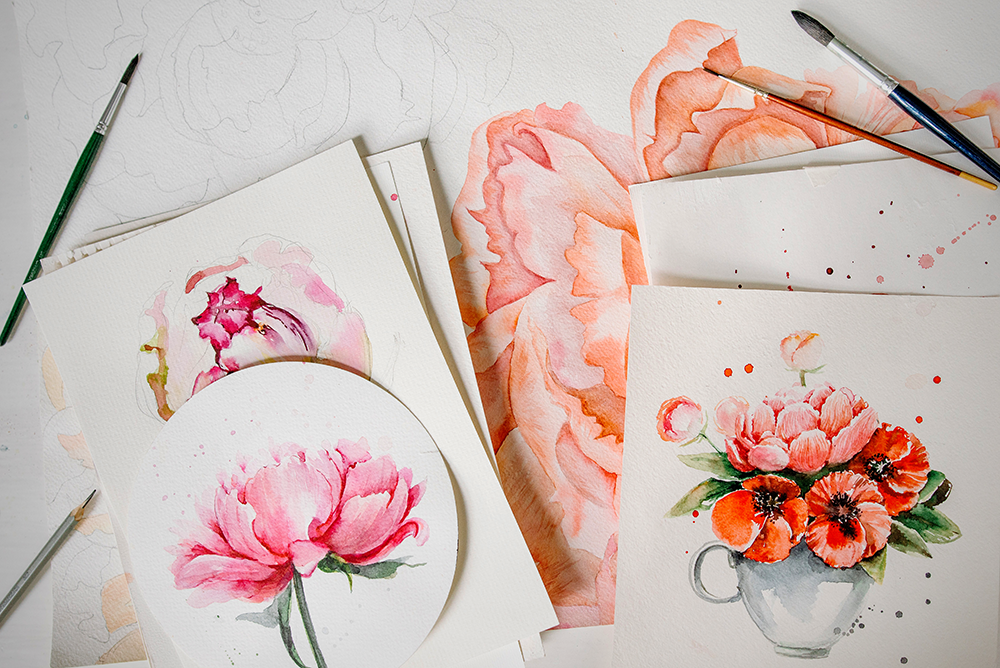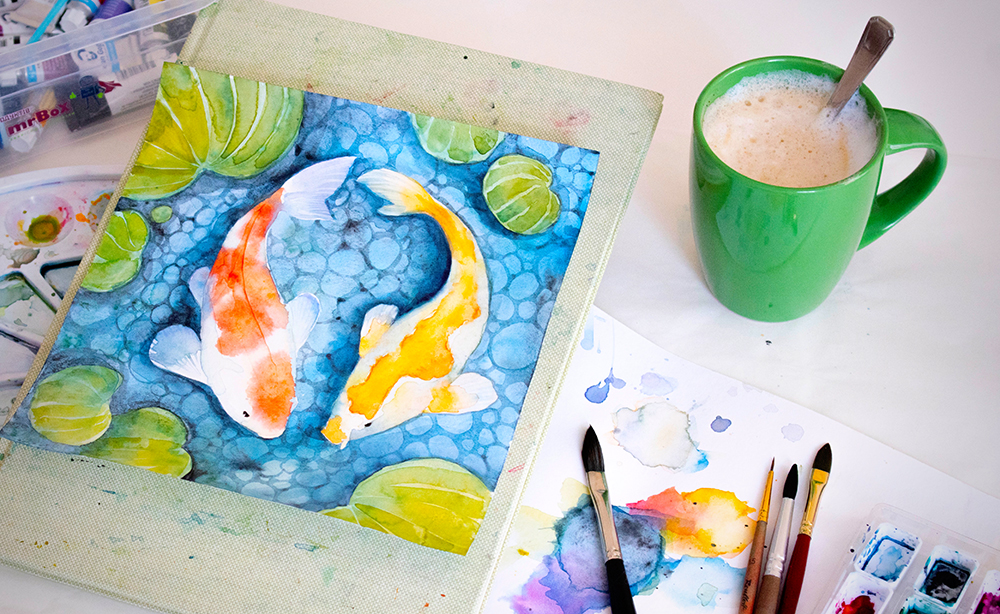Painting has enchanted us for centuries, from the delicate brushstrokes of the Renaissance to the daring splashes of modern abstract art.
It’s a medium that allows artists to pour their souls onto the canvas.
But what are the secrets behind these mesmerizing masterpieces?
Dive into our guide to uncover the seven golden rules that every artist should master to create visually stunning and emotionally compelling paintings.
Ready to unlock your creativity? Let’s get started!
Key Takeaways:
- Understanding the fundamental rules of painting can significantly enhance your artwork.
- Elements like negative space, texture, and focal points are crucial for creating compelling compositions.
- Careful observation and practice are essential for mastering these principles.



1. Composition: The Building Blocks of Art
Composition is the arrangement of elements within a painting.
It serves as the foundation upon which the artwork is built.
A well-composed painting guides the viewer's eye through the artwork, creating a sense of balance and harmony.
One principle of composition is the rule of thirds.
By dividing the canvas into nine equal parts, artists can place the main subject at the intersections, creating a more dynamic and engaging composition.
For example, in a landscape painting, placing the horizon line one-third from the top or bottom can add depth and interest.
2. The Power of Negative Space
Negative space refers to the empty areas around and between the subjects of a painting.
It is just as important as the positive space, which is occupied by the main subjects.
Negative space helps to define the boundaries of positive space and brings balance to the composition.
Artists often use negative shapes to create a sense of depth and movement.
For instance, in a still life painting, the space around the objects can be used to highlight the main subject and draw the viewer's attention to specific details.
Careful observation of negative space can transform a flat wall into a dynamic and engaging scene.
3. The Role of Texture in Painting
Texture adds a tactile quality to a painting, making it more engaging and realistic.
It can be achieved through various techniques, such as using thick paint, layering, or incorporating different materials.
For example, an artist might use a palette knife to apply thick paint, creating a rough, textured surface that mimics the feel of the subject.
Alternatively, they might use a dry brush technique to create a softer, more subtle texture.
The texture element can add depth and interest to a painting, making it more visually appealing.



4. The Importance of Light and Shadow
Light and shadow play a crucial role in creating a sense of depth and dimension in a painting.
By carefully observing the light source and how it interacts with the objects in the scene, artists can create realistic and compelling compositions.
Reflected light, for example, can add a sense of realism to a painting.
When light bounces off one object and illuminates another, it creates a subtle glow that adds depth and interest.
Artists can use this technique to highlight specific areas of the painting and draw the viewer's eye to the focal point.
5. The Use of Color and Contrast
Color is one of the most powerful tools in an artist's arsenal.
It can evoke emotions, create a sense of depth, and guide the viewer's attention.
Understanding how to use color effectively is essential for creating compelling paintings.
Contrast, for example, can be used to create a sense of depth and interest.
By placing darker colors next to lighter ones, artists can create a sense of distance and dimension.
For instance, in a landscape painting, using darker colors in the foreground and lighter colors in the background can create a sense of depth and distance.
6. The Principle of Movement
Movement refers to the way the viewer's eye travels through a painting.
It can be achieved through the use of lines, shapes, and colors that guide the viewer's attention from one part of the painting to another.
For example, an artist might use diagonal lines to create a sense of movement and direction.
By placing these lines strategically, they can guide the viewer's eye through the painting, creating a dynamic and engaging composition.
Movement can also be achieved through the use of color, such as using a combination of warm and cool colors to create a sense of flow and energy.



7. The Art of Detail and Emphasis
Detail and emphasis are crucial for creating a focal point in a painting.
By adding intricate details and emphasizing specific areas, artists can draw the viewer's attention to the main subject of the painting.
For example, an artist might use fine brushstrokes to add detail to the main subject, creating a sense of realism and depth.
They might also use contrasting colors or values to emphasize specific areas, making them stand out from the rest of the painting.
Detail and emphasis can add a sense of realism and interest to a painting, making it more engaging and visually appealing.
Painting Basics: Your Guide to Getting Started
Embarking on your painting journey can be both exciting and overwhelming.
Whether you're a beginner or looking to refine your skills, understanding the basics is crucial.
First, familiarize yourself with different types of paint—acrylic paint, oil paint, and watercolors each offer unique properties and effects.
Next, invest in quality paint brushes and canvases to ensure your tools match your creative vision.
Learning fundamental techniques like blending, layering, and brushwork will set a strong foundation.
Don’t forget the importance of color theory; knowing how to mix and match colors can make your artwork pop.
Lastly, practice regularly and don’t be afraid to experiment.
The more you paint, the more you'll discover your unique style and preferences.
Painting Tips: Master Your Craft with Ease
Ready to elevate your painting game?
These painting tips and tricks will help you refine your skills and create stunning artwork.
- Prep Your Canvas: Always start with a primed canvas. Gesso is your best friend; it creates a smooth surface and enhances paint adhesion.
- Use the Right Brushes: Different brushes serve different purposes. Flat brushes are great for broad strokes, while round brushes are perfect for detail work.
- Master Color Mixing: Invest time in learning color theory. Understanding primary, secondary, and tertiary colors will help you mix the perfect shades.
- Layering Techniques: Start with thin layers and build up. This approach allows for more control and depth in your painting.
- Keep Your Palette Clean: A clean palette ensures your colors remain vibrant and true. Use a palette knife to mix colors instead of your brushes.
- Experiment with Mediums: Add texture and depth by incorporating different mediums like gels, pastes, and varnishes.
- Drying Time Matters: Be patient with drying times, especially with oil paints. Rushing can lead to muddy colors and unwanted textures.
- Use a Limited Color Palette: Sometimes less is more. A limited palette can create harmony and cohesion in your artwork.
- Practice Brush Control: Hold your brush at different angles and pressures to achieve various effects. Practice makes perfect!
- Step Back and Reflect: Periodically step back from your work to see it from a distance. This helps you spot areas that need adjustment.
- Keep a Sketchbook: Jot down ideas, practice techniques, and experiment with compositions in a sketchbook. It’s a great way to track your progress.
- Stay Inspired: Surround yourself with art that inspires you. Visit galleries, follow artists on social media, and join art communities.
Remember, the key to mastering painting is practice and patience.
Keep experimenting, and most importantly, have fun with your creative process!



Unlock Your Potential with The Golden Rules
By mastering these seven essential rules of painting, you can elevate your artwork to new heights.
Understanding and applying principles like composition, negative space, texture, light and shadow, color and contrast, movement, and detail and emphasis will transform your paintings into captivating masterpieces.
These rules serve as the foundation for creating engaging and dynamic compositions that capture the viewer's attention and evoke emotions.
So, grab your paint brushes and let your creativity soar—your next masterpiece awaits!



Painting FAQs
Are you ready to dive into the colorful world of painting?
Whether you're a seasoned artist or just picking up a brush for the first time, understanding the fundamentals can make all the difference in your creative journey.
These FAQs are here to answer your burning questions and help you master the art of painting.
From the importance of negative space to the magic of light and shadow, we've got you covered.
Let's explore the essential elements that will bring your artwork to life!
What is the importance of negative space in painting?
Negative space is crucial in painting as it helps define the boundaries of positive space and brings balance to the composition. It can create a sense of depth and movement, making the painting more dynamic and engaging.
How can texture be achieved in a painting?
Texture can be achieved through various techniques, such as using thick paint, layering, or incorporating different materials. Artists might use a palette knife to apply thick paint or a dry brush technique to create a softer texture, adding depth and interest to the painting.
Why is light and shadow important in painting?
Light and shadow play a crucial role in creating a sense of depth and dimension in a painting. By carefully observing the light source and how it interacts with the objects in the scene, artists can create realistic and compelling compositions. Reflected light, for example, can add a sense of realism and highlight specific areas of the painting.



Eager to work on your painting compositions? Check out Ian Roberts' video!
Want even more content about creativity and art?
Be sure to check out all of our creative chronicles!
Ready to dive into the world of painting?
Check out our other painting articles:
-What is the easiest thing to paint?
-What are the basic skills of painting?
-How long does it take to get good at painting?










